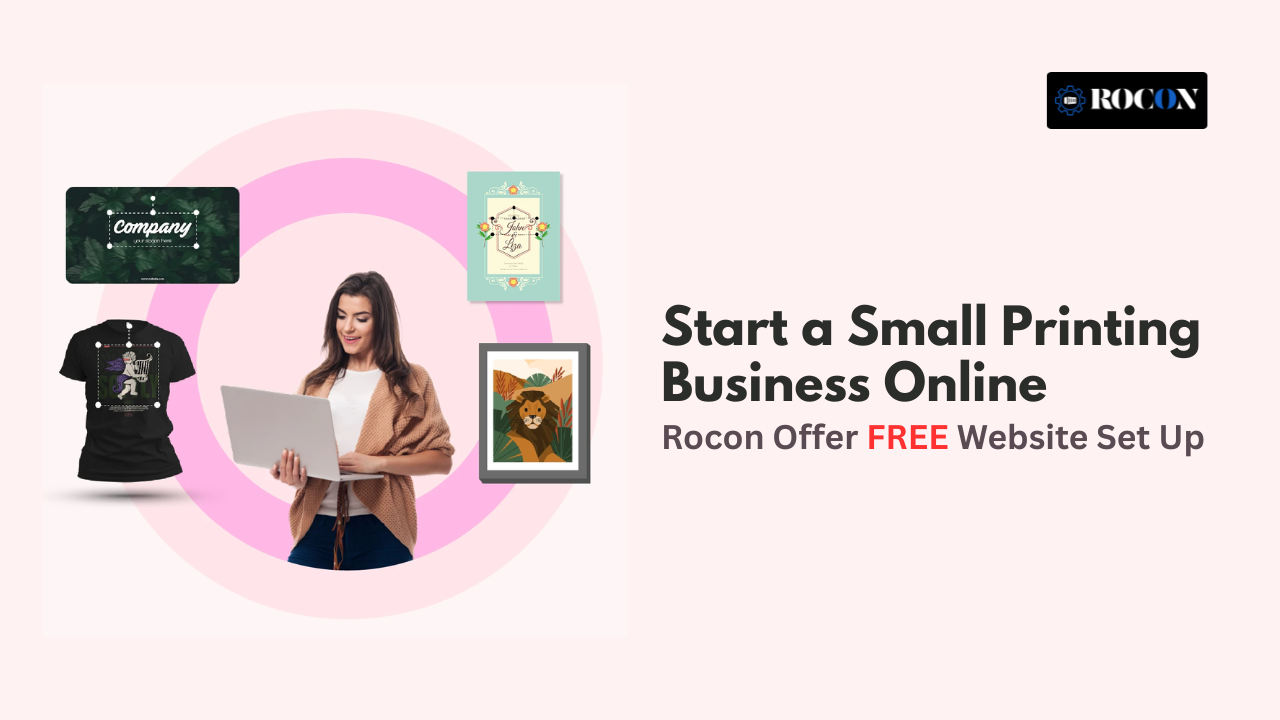
Looking to start a small printing business but not sure where to begin? You’re not alone. Thousands of entrepreneurs across the world have turned their interest in design, branding, or production into profitable small printing companies. And here’s the good news — you don’t need to have a massive budget or a huge facility to get started.
In fact, with the right tools, a clear niche, and a bit of hustle, you can launch a printing business right from your home or a small studio space. Let’s break down what it really takes to turn this idea into a sustainable venture.
Why Start a Printing Business?
The demand for custom-printed materials isn’t slowing down anytime soon. From T-shirts, business cards, and marketing flyers to wedding invitations and branded packaging — everyone from startups to local shops needs quality printing.
Unlike tech-heavy industries, printing offers a low barrier to entry. It’s one of the few creative businesses where your return on investment can grow quickly, especially if you focus on a niche.
Step 1: Define Your Niche
The printing industry is broad, so it’s smart to narrow your focus before diving in. Some common niches include:
-
Apparel printing (T-shirts, hoodies, hats)
-
Marketing materials (flyers, business cards, posters)
-
Event printing (invitations, banners, signage)
-
Custom packaging and labels
-
Photo and art prints
Choosing a niche helps you focus your efforts, cut unnecessary costs, and market your services more effectively.
Step 2: Understand the Startup Requirements
Before purchasing equipment, take time to plan out the essentials. Here’s what you’ll need:
Equipment
Your setup will depend on your niche. For example:
-
T-shirt printing: Heat press, DTG (Direct to Garment) printer, or screen printing tools.
-
Paper printing: High-resolution inkjet or laser printers, cutting tools, laminators.
Start with reliable, entry-level equipment and upgrade as your business grows.
Supplies
Inks, paper stock, vinyl, packaging material — make sure you budget for recurring expenses.
Software
Design tools like Adobe Illustrator, Photoshop, or budget-friendly options like Canva or Affinity Designer are essential for preparing client artwork.
Step 3: Register Your Business
Even if you’re operating from home, registering your printing business legally adds professionalism and protects you from liabilities. Here’s what to consider:
-
Choose a business name and check domain availability.
-
Register with your local authority or small business bureau.
-
Set up a business bank account and accounting software to track expenses.
Also, don’t forget to check if your state or country requires permits or licenses for commercial printing.
Step 4: Build Your Online Presence
Today’s customers often search online before making a purchase, even for printing services. Having a clean, professional website is a must.
Use WordPress to build a business website that:
-
Showcases your portfolio
-
Lists services and pricing
-
Includes customer testimonials
-
Allows online orders (use WooCommerce or other eCommerce plugins)
-
Offers an easy contact form
Hosting your site on a reliable platform like Rocon ensures faster loading times and top-tier performance, especially important for image-heavy websites.
Step 5: Promote Your Business Locally and Online
Getting your first few customers can take effort, but with a strategic approach, you’ll gain traction quickly.
Offline Promotion
-
Partner with local businesses: offer bundle deals or referral programs.
-
Attend networking events or pop-ups to show samples.
-
Hand out flyers, business cards, and free sample packs.
Online Promotion
-
Use Instagram or Pinterest to showcase your designs and past projects.
-
Run targeted Facebook or Google Ads for specific niches like “custom T-shirts for events” or “affordable flyers for small businesses.”
-
List your business on Google Maps, Yelp, and local directories.
Word-of-mouth will grow with time, especially if your print quality and customer service are strong.
Step 6: Provide Excellent Customer Service
Meeting deadlines, being transparent about pricing, and offering consistent print quality will set you apart from your competitors. In the printing business, one bad job can lose a client, but one excellent job can win you many referrals.
Always double-check artwork before printing, provide mockups when necessary, and follow up with clients after delivery.
Step 7: Plan for Growth
Once you’ve built a small, stable customer base, look at ways to scale:
-
Introduce new services like custom packaging or branded merchandise.
-
Offer subscription-based printing packages for recurring clients.
-
Hire part-time help to speed up production during peak seasons.
If you’re operating online, consider expanding to marketplaces like Etsy, Shopify, or Amazon Handmade to reach broader audiences.
Final Thoughts
Starting a small printing business doesn’t require massive capital, but it does demand planning, creativity, and dedication. When done right, it can become a rewarding, long-term business that grows with your customer base. By finding your niche, investing in the right tools, and delivering consistently, you’ll set yourself up for success.
And remember, your website is your storefront. Hosting it on a fast, secure, and managed platform like Rocon can make a big difference in client experience and conversions.
Let your designs speak — and let your business print its way to profit.